2019-01-24|News
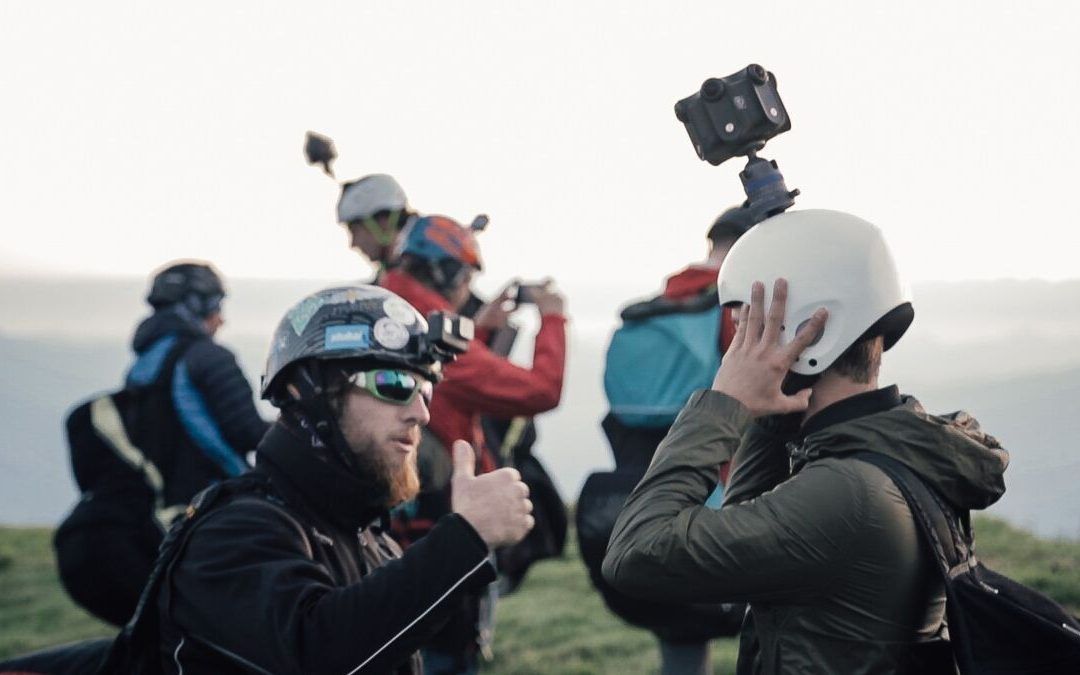
Shot by Obsidian R, the immersive 360° documentary Into the Sky shows the adrenalin loaded daily life of three extreme athletes. The first person view also gives audience maximum immersion and brand-new experience. In the following interview, let’s follow Director Julian Leupold and learn the story behind.
Into the Sky documents the passion of a paraglider, an aerobatic pilot and a parachutist in 360°. Their daily routine? Risking their lives during breathtaking maneuvers.
The team on set consisted of a total of five people. This included my colleague Lorenz Wetscher, myself, the sound engineer Moritz Grusch, who was responsible for sound recording and mixing of the spatial sound, as well as the cameraman Markus Wastl, who took over the making of camera. In addition, my girlfriend Antonia Hahn accompanied us.
Several paragliders from Austria, as well as an aerobatic pilot and a parachutist from Bavaria supported the shooting and made the project “Into the Sky” possible.
The reduced crew size was absolutely necessary as the film had to be as efficient as possible to shoot. We were always on the move and almost all scenes were shot outdoors.

The 360° format is ideal for the genres of VR extreme sports and documentaries in general. On the one hand, because the immersion is enhanced by the all-round view. The user has the feeling that he is close to the action, instead of only passively consuming a flat image. This is exciting because the viewer cannot look away from the adrenaline intensive moments, such as the jump out of the plane. He is in the center of the action.
On the other hand, 360° film is an innovative format that opens up new possibilities in interactive storytelling. As I wanted to explore the new challenges and opportunities for myself, the project was great to test what’s possible.
Also, the KanDao Obsidian R 8K 360 camera enabled us to produce the film in the highest technical quality with the so-called film look.
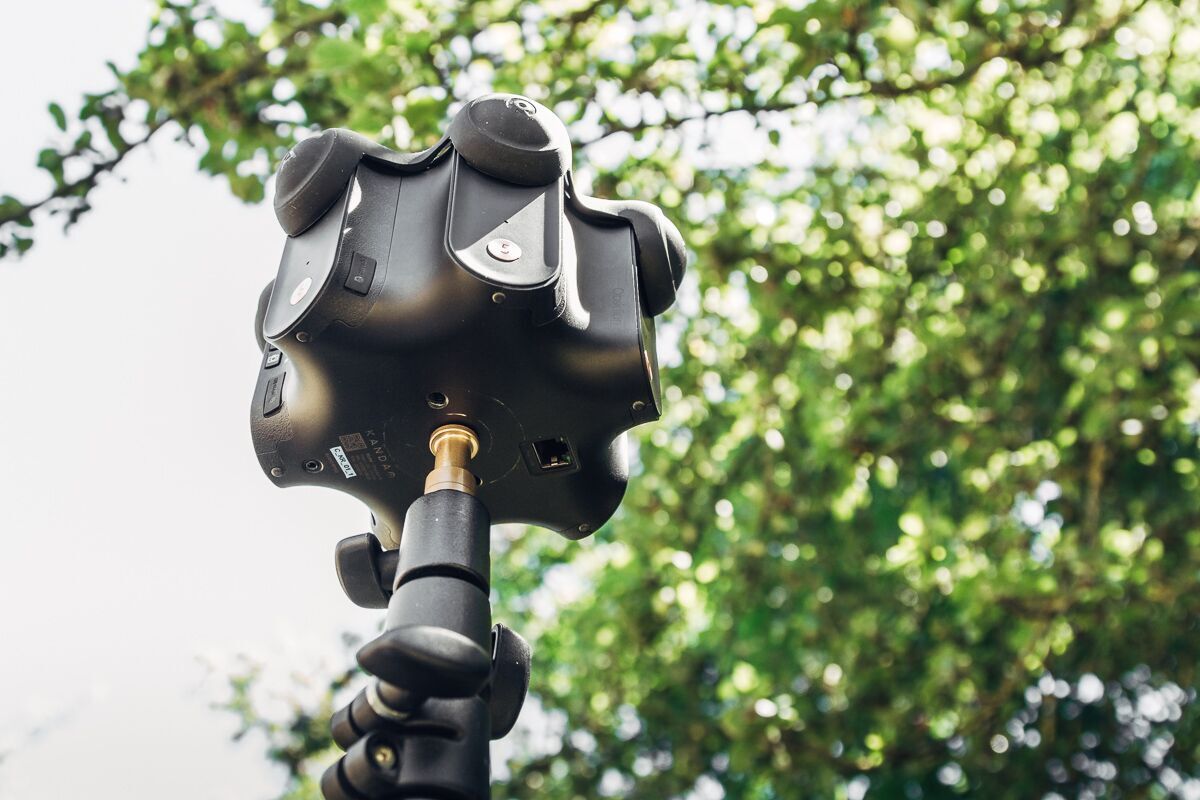
You can connect Obsidian camera with various accessories such as audio recorders to record professional 360° sound, which plays an important role in VR and 360° experiences. The viewer hears sounds in varying degrees of intensity, depending on which direction he is watching. This works very good with sound effects or in interview situations, so the viewer knows where the narrator is located in the scene. Motion graphics, i.e- animated graphics, can also guide the user by displaying a direction or the possibility of interacting with an object.

However, the user has only limited interaction options in a 360° film. These are reduced to the head rotation. In order to create a real interaction that can even influence the course of the story, I created an interactive app together with the Munich start-up Viond.
In this app, the user can experience the linear film as an interactive experience. For example, the user can now change the perspective during the flight, select which stunt he wants to fly, or he even has to activate the jump out of the plane in the right moment in time. Nothing for weak nerves! The app will soon be released for free on the App Store and Play Store. Information on this can be found on the Facebook page of “Into the Sky”.
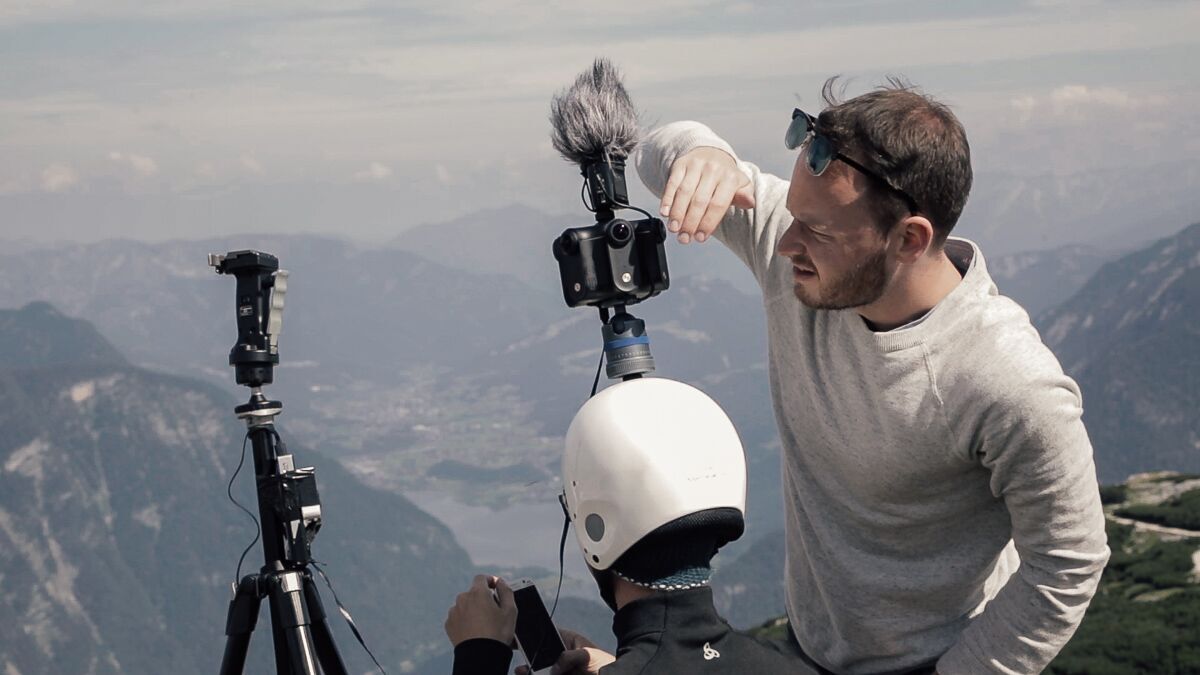
Of course, before the actual filming, there were test flights to find out how a professional 360 camera such as the KanDao Obsidian R can be mounted on an airplane or during a flight.
Here I was supported by the athletes who were very familiar with what is possible in the air. They also supported me in building various camera mounts. For example, the helmet with tripod head, or the mount in the plane, which had to endure extremely much due to the forces acting. Everything is custom made.

A big challenge is finding suitable topics for 360° film productions. Because of course, the format should also be able to offer added value for the story to be narrated.
The shooting opens completely new challenges. That starts with the conception. How to draw a storyboard for a 360° view? How to set up lights and microphones when everything is visible? Although there are different approaches, there are still no standards. Everything is pretty experimental and a big playground. For us the biggest challenges were using the camera in the most extreme situations possible. With a lot of support from the athletes and custom mounts we made it work.
On the side of post production, the so-called stitching adds a whole new level. The shot footage cannot be seen and cut immediately. The preview image inside the KanDao App helped a lot to review the shots already on set, so that an assessment of the result on location is possible. The recorded images are then saved as six individual photos or video clips on the SD cards. So when stitching the images readjustment possibilities remain open for optimal results.
Postproduction was extremely time-consuming. From stitching to cut, motion design and retouching tripods, I took over the complete post production alone. Current fast hardware is an absolute must. I did the stitching mainly in Mistika VR, then editing in Adobe Premiere Pro. But I also used Adobe After Effects, for motion graphics and grading, as well as Photoshop, for image retouching.
The postproduction of the spatial sound was done by Moritz Grusch.
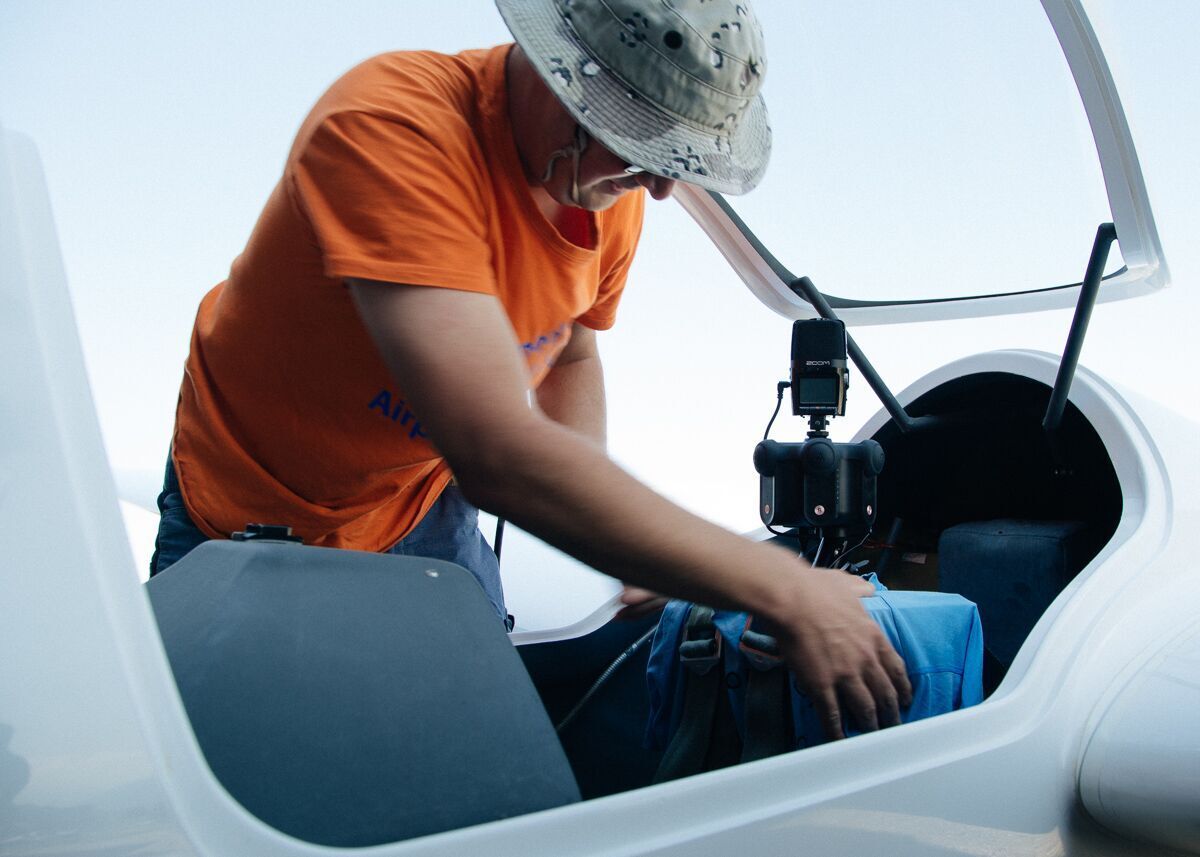
Most users can handle the movie amazingly well, only a few experience motion sickness. This is mostly because between the action sequences there are longer static sequences to recover.
I am particularly pleased when users are so immersed in the action that they really scare when they jump out of the plane, or are amazed when they fly a looping. That proves to me how well the story works in combination with the 360° format.

In my opinion every new format will change the way we tell stories. Storytellers always adapt to new technical possibilities. Let’s just think about the introduction of television, or 3D in the cinema. Storytellers played with the new technical possibilities and completely new formats developed.
With the Obsidian R camera I was able to shoot professionally in a flat picture profile, with a resolution of 8K. This allowed a variety of editing options in post production. For example, color correction or retouching.
So if you want to shoot a movie yourself with the KanDao Obsidian VR camera, I definitely recommend to use the app. It can control the camera settings over longer distances for example to start and stop recording or to review shots. The app even offers the possibility to see a stitched view of the live image. This has the advantage that you do not have to re-enter the camera’s field of view each time to start a recording. Simply stay at a safe distance and control everything.
In conclusion, the KanDao Obsidian R camera plays at a high level, allowing creative influence on the image. It helps to deliver the cinematic quality viewers are used to.
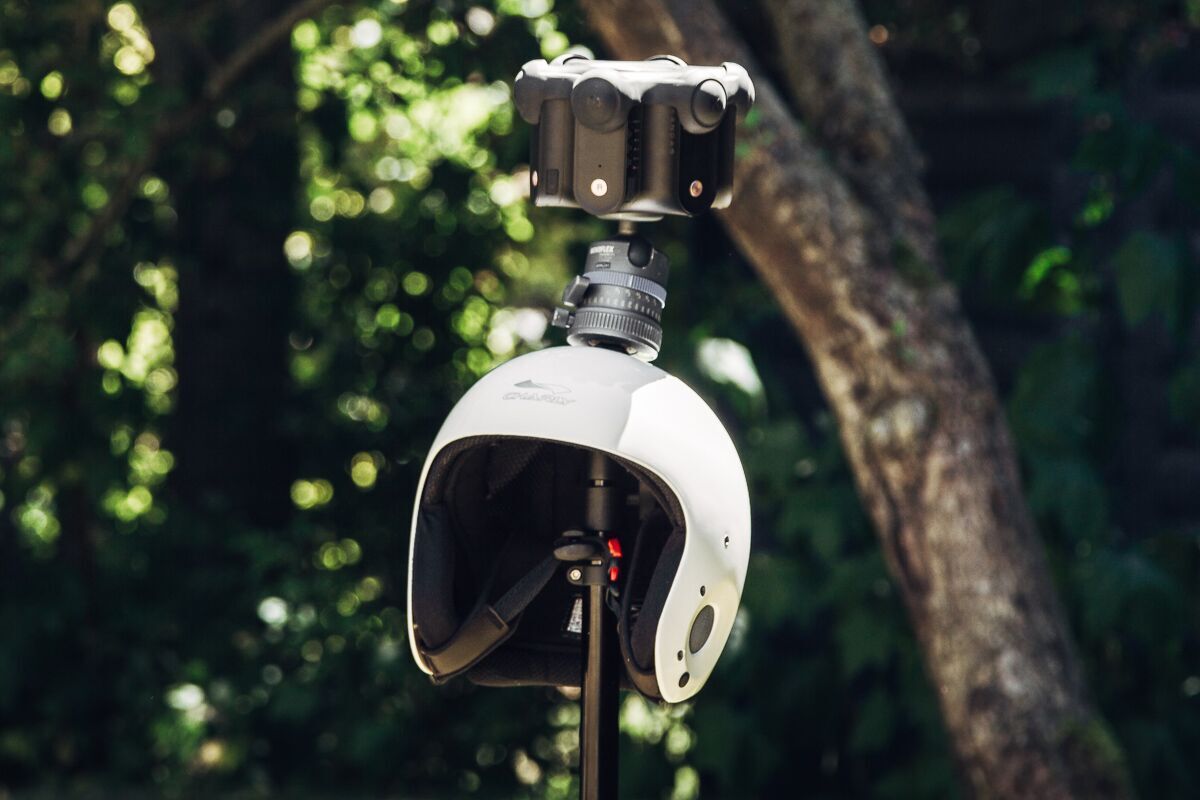
At this point I would like to especially thank the company INVR.SPACE GmbH, which has supported the project with the loan of the camera as well as further equipment.
All in all a good 360° film to me is the one making use of the format and the new technical possibilities to tell even more immersive stories.
More articles:
Behind the Scenes of ‘Money’ 360° First-person VR MV
Behind the Scenes of ‘Into the Sky’ 360° VR Extreme Sports Documentary
Case Study: How 8K 360 Live Stream Transforms Golf Competition?
Behind the Scenes of ‘Travel Across Bosnia and Herzegovina’ VR Documentary